Adaptations Are All Around Us
Each organism that we have seen underwater has an interesting story. Many of these stories involve unique adaptations that the organism uses to survive in the ecosystem. Some of these adaptations can be seen easily. Others are more difficult to recognize, but through careful scientific study, scientists have uncovered some of the adaptations of the organisms in McMurdo Sound.
Today, I thought we'd look at some organisms and their adaptations through photos that we've taken under the ice.
Volcano Sponge (Scolymastra joubini)
You've seen the volcano sponge in photos we've posted before. It's easy to be impressed with their size - some are six feet tall! But the interesting story of the volcano sponge is its method of feeding. A sponge can't move around and it doesn't have teeth. Do you have any idea how it feeds?
Look inside the sponge. Maybe this will help you understand how the sponge feeds.
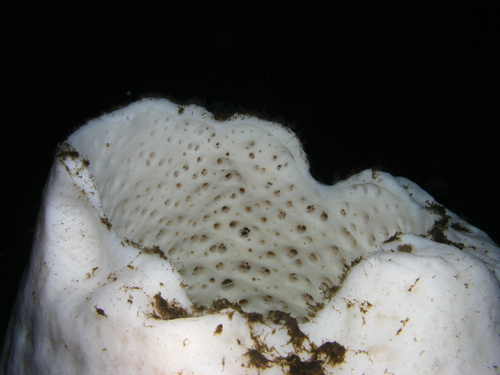
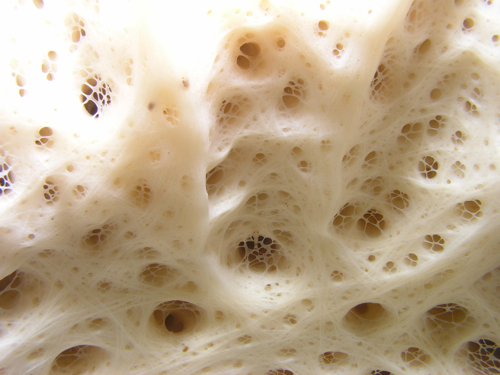
Most sponges are filter feeders. They draw water through their bodies and out through the hole in the center. All of those holes are for water flow. What is more interesting are those long strands or fibers. What do you think might get caught on those? Well, the water contains a lot of microscopic life floating around. So, sponges filter the microscopic life and dead material from the water. The holes and fibers are structural adaptations that allow the sponges to feed.
Anemone (Isotealia antarctica)
In many dive sites, the bottom is covered with thousands on anemones. There are many different species, with different colors and sizes. This one is likely Isotealia antarctica. The tentacles that you see are an interesting structural adaptation. Anemones have tentacles at the top around their mouth which is in the center. They grab prey that are floating by in the water column. Jelllyfish are a particularly favorite snack.
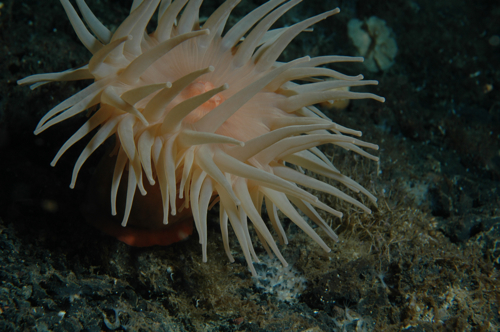
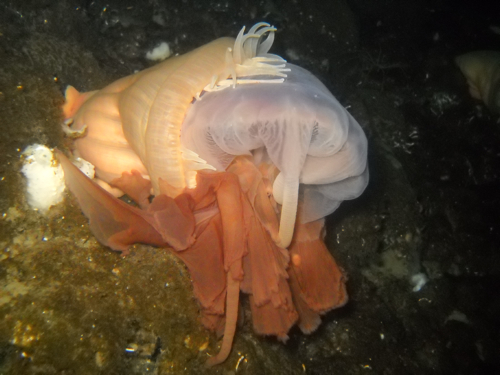
Featherduster Worm (Perkinsiana sp.)
Featherduster worms have several unique adaptations that you can see in this photo. First, they live in a tube that they build. This tube offers some protection and they can withdraw into it. The tube is often encrusted with material from the bottom, so they blend in to their surroundings. Also, the featherduster worm has tentacles that it can extend above the tube to capture food that is floating by in the water. Each of these tentacles has small hairs called cilia, which are used to push the food down to the worm's central mouth.
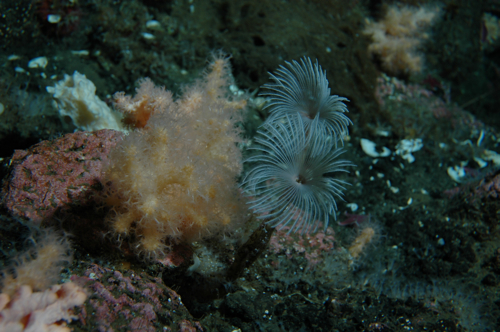
Sea Cucumber (Staurocucumis liouvillei)
We've seen many sea cucumbers out displaying one of their amazing structural adaptations. Sea cucumbers will often be found on the top of corals with their feeding tentacles deployed. These feeding tentacles capture food particles from the water column.
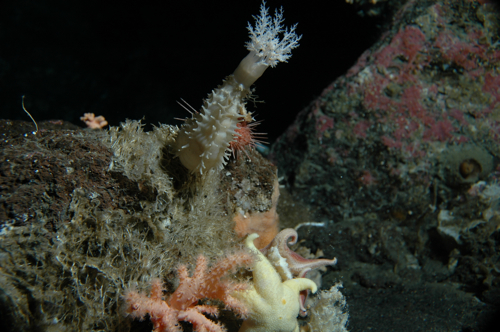
Comb Jellies (Ctenophore)
Ctenophores are small jellies that we often see floating by in the water. When they are swimming, some species look like clear little barrels or clear footballs floating by. Other species are longer, looking more like a clear garden snake. When they are feeding, however, they look like this.
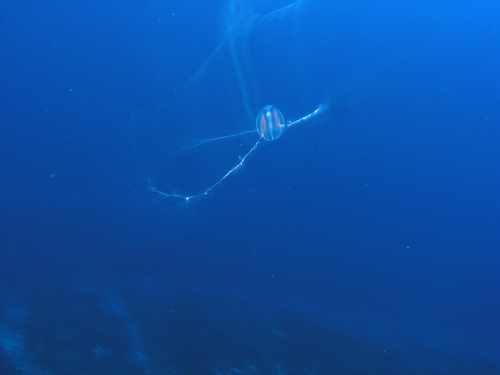
Ctenophores have these feeding nets that they can deploy from their bodies to capture the floating materials that are going by. Like Featherduster worms and sea cucumbers, they are hopeing to capture plankton as they drift around. Some of these feeding nets are very elaborate, like spider webs, floating in the water. They are so beautiful when you shine your light on them.
Summary
Every dive we are observing lots of organisms using their structural adaptations to survive in McMurdo Sound. Just by looking at these animals, we can see structural adaptations and make some educated guesses about how there using them. It's a lot of fun to make observations in the water and then discuss them after the dive.
Tomorrow, we'll test your knowledge of structural adaptations with some photos. We can't wait to see all the structure adaptations you can find.


Comments